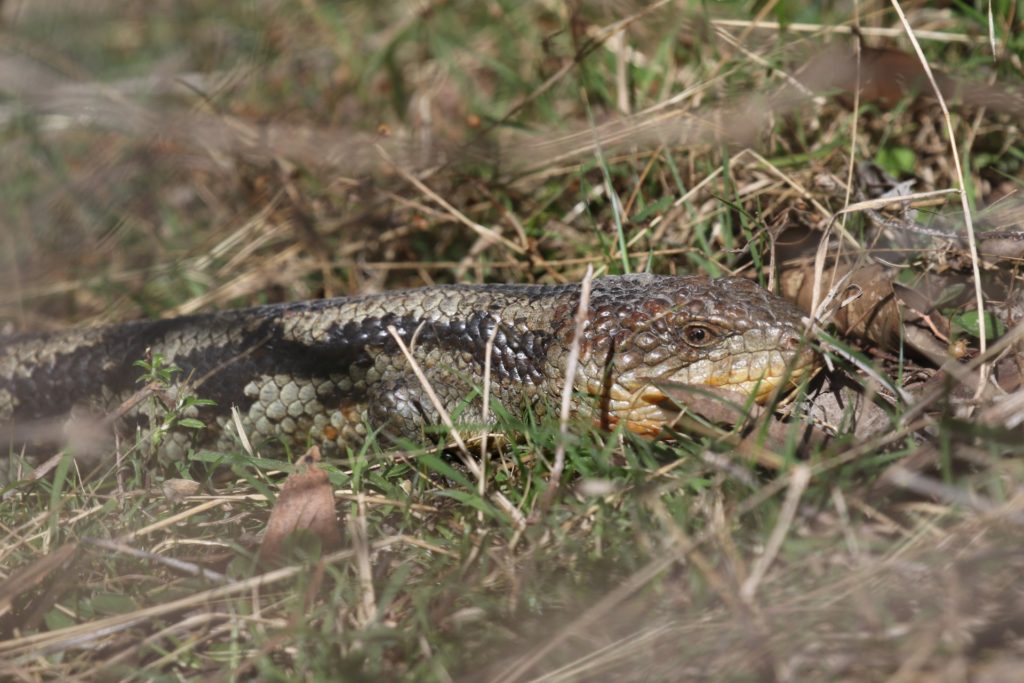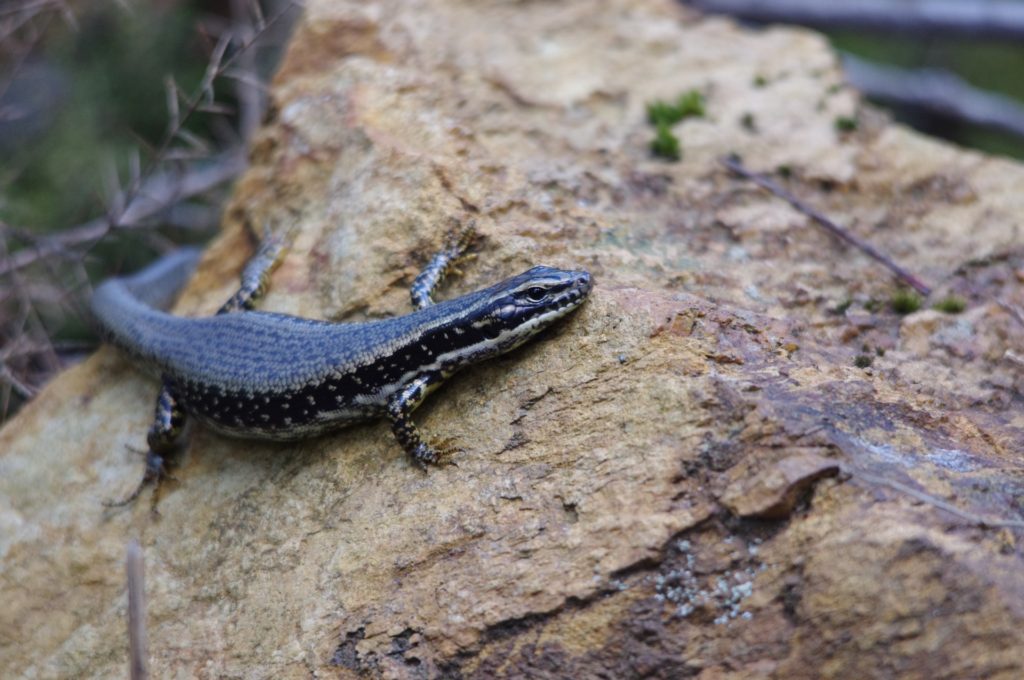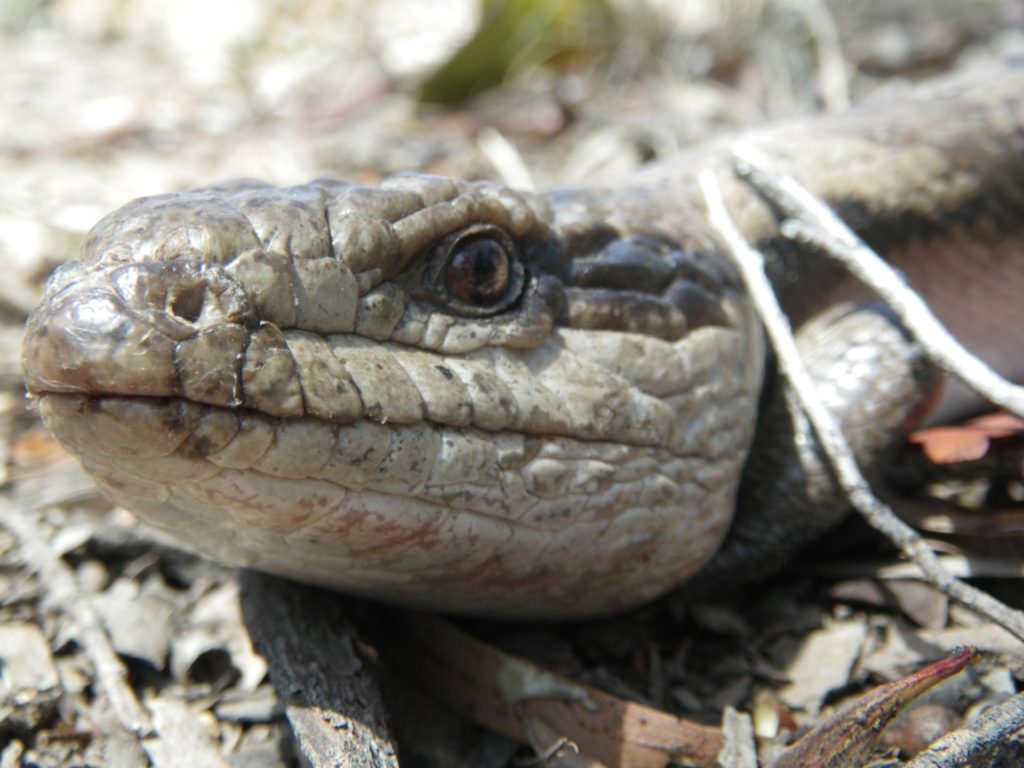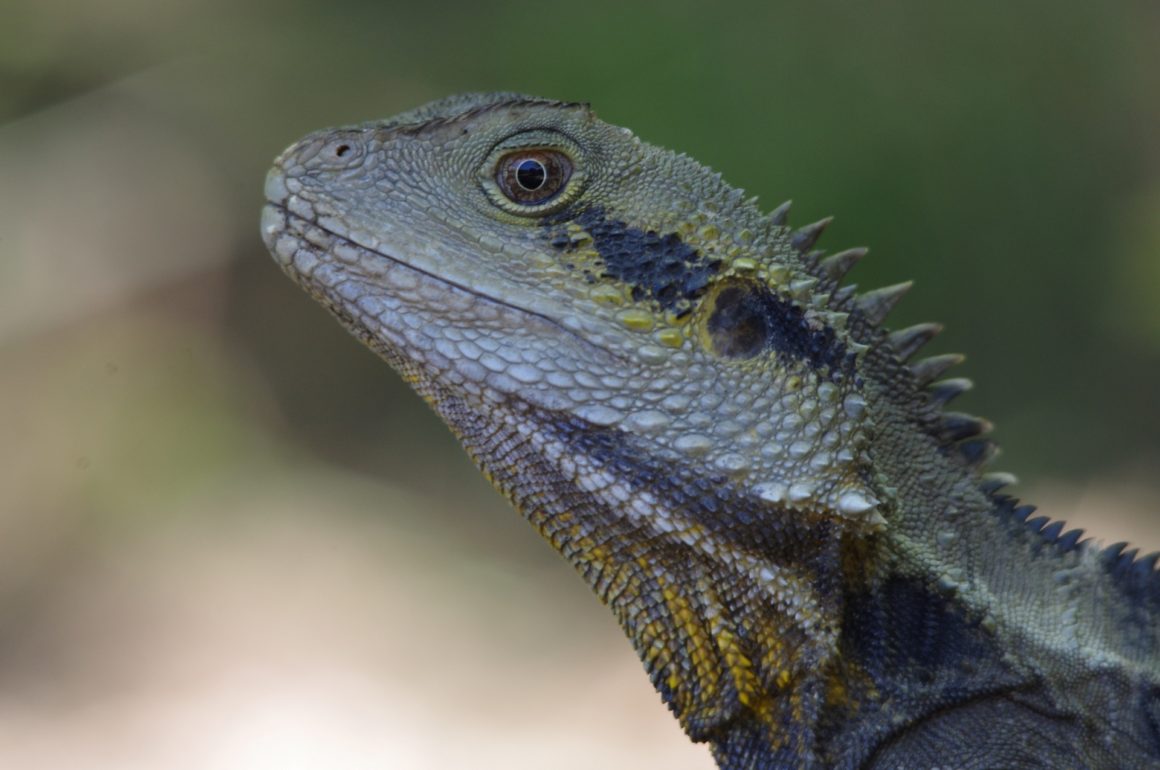How would you feel about a dragon living at the bottom of your garden? Not the fierce gold-hoarding kind from medieval legend, but the clever, lively Australian kind. In fact, Australia is a land of ‘dragons’: our very own native lizards. From sluggish blue-tongues to energetic garden skinks, there’s a wide variety of lizards you can attract to your yard. You may be worried about lizards and children in the same backyard, but fear not, as Australia’s lizards are perfectly harmless. On top of this, many lizards, like the blue-tongue lizard (Tiliqua spp.), will also eat garden pests, like slugs and snails.

So, how do you bring native lizards to your garden? By creating a dragon’s den, of course!
The first thing to consider is the location. Lizards often bask in the late morning to warm up before foraging in the afternoon and then bask again while they digest their meal. For this reason, your dragon’s den should be on a site that receives both morning and afternoon sun. Make sure to also avoid constructing your dragon’s den in a depression that might flood or become waterlogged after rain.

The ‘hardscaping’ comes next. A dragon’s den can be constructed from a wide range of materials, though stones or old bricks are often best because they are more insulating. If you have spare roof tiles, terracotta pipes, or even old, jagged pieces of concrete, these can be used too.
Constructing your dragon’s den is straightforward. Simply stack your material in a pile while making sure to leave some small spaces for your lizards to squeeze into, especially on the ground level. Remember that if you want to encourage larger lizards, like blue-tongues, then wider gaps will be needed. Your dragon’s den can be anywhere from 40 cm in diameter, for small lizards, up to a metre or more in diameter if you want to attract larger lizards. You can even top it off with some leaf litter which will gradually break down and make the whole structure more waterproof over time.

The next thing to consider is the planting. While your dragon’s den will provide lodgings for native lizards, they’ll need food and extra places to shelter while foraging during the day. Lizards appreciate a garden with a large diversity of native vegetation, but three great plants to start with are mat-rushes (Lomandra spp.), tussock grasses (Poa spp.), and saltbushes (Atriplex spp. and Chenopodium spp.).
The mat-rushes and tussock grasses will provide shelters that your lizards can retreat to if they need to avoid predatory birds or cool off. Saltbushes will also provide shelter, but have the added bonus of producing small, red berries which many lizards will eat! Remember, though, it’s best to choose local (indigenous) species as they’ll handle your climate and soils best and won’t need looking after once established. So, head down to your local indigenous nursery when the time comes to choose your plants.

Lastly, consider the safety of your lizards. Cats have a terrible habit of preying on lizards. In fact, the CSIRO has recently estimated that cats, domestic and feral, kill around 1.5 million reptiles per day. So, for the safety of your lizards and of your cat, it’s best to keep your tabby indoors. Dogs will rarely bother small lizards, but will often attack and kill larger lizards, like blue-tongues, so keep this in mind when considering where you build your dragon’s den.
Lizards are fascinating to watch, remarkably clever, and great natural pest controllers. So why not help them out by building a dragon’s den? You’ll be surprised how quickly they’ll arrive and if you spend long enough hanging around them, they’ll become surprisingly tame! A dragon’s den will add an interesting talking-point to your garden and you’ll be helping native wildlife at the same time.
Cover image of an Eastern Water Dragon courtesy of Cathy Cavallo.


Leave a Reply